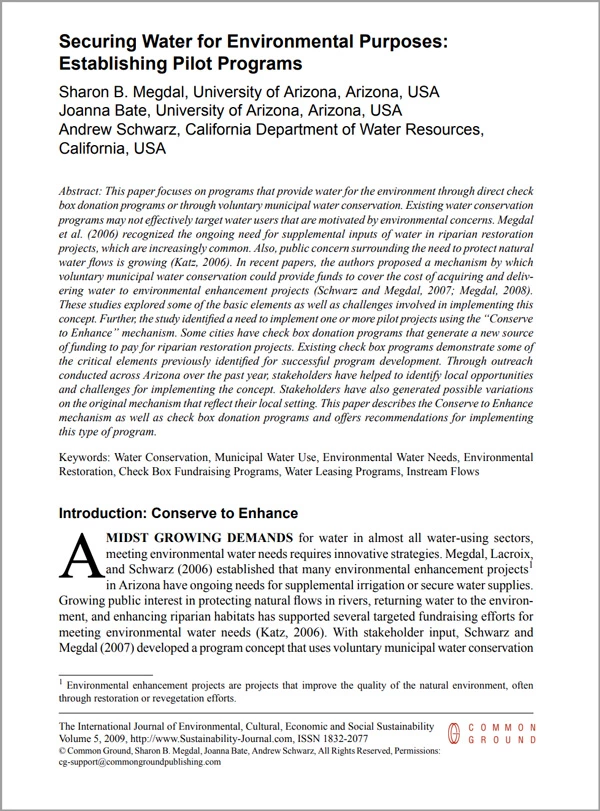
This paper focuses on programs that provide water for the environment through direct check box donation programs orthrough voluntary municipal water conservation. Existing water conservation programs may not effectively target water usersthat are motivated by environmental concerns. Megdal et al. (2006) recognized the ongoing need for supplemental inputs of water in riparian restoration projects, which are increasingly common. Also, public concern surrounding the need to protect natural water flows is growing (Katz, 2006). In recent papers, the authors proposed a mechanism by which voluntary municipal water conservation could provide funds to cover the cost of acquiring and delivering water to environmental enhancement projects (Schwarz and Megdal, 2007; Megdal, 2008). These studies explored some of the basic elements as well as challenges involved in implementing this concept. Further, the study identified a need to implement one or more pilot projects using the “Conserve to Enhance” mechanism. Some cities have check box donation programs that generate a new source of funding to pay for riparian restoration projects. Existing check box programs demonstrate some of the critical elements previously identified for successful program development. Through outreach conducted across Arizona over the past year, stakeholders have helped to identify local opportunities and challenges for implementing the concept. Stakeholders have also generated possible variations on the original mechanism thatreflect theirlocalsetting. This paper describesthe Conserve to Enhance mechanism as well as check box donation programs and offers recommendations for implementing this type of program.

